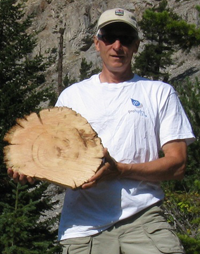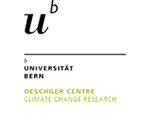Plenary Speaker - Dave Sauchyn

Downloads
> View the online video with slides
> Download the powerpoint presentation (ppsx)
Biography
Dave Sauchyn
Prairie Adaptation Research Collaborative
University of Regina, Regina, Canada
sauchyn@uregina.ca
Dr. Dave Sauchyn is Research Professor at the Prairie Adaptation Research Collaborative (PARC) at the University of Regina. His research expertise is the climate and hydrology of the past millennium in Canada’s western interior and how knowledge of the past can inform scenarios of future climate and water supplies. Dave has been an invited expert witness on climate change in the Canadian Senate and House of Commons, and at forums hosted by provincial premiers and environment ministers.
Dave is currently co-directing a five-year study of vulnerability to climate extremes in Chile, Argentina, Colombia, Brazil and the Canadian Prairies. He is senior editor and co-author of the book The New Normal: The Canadian Plains in a Changing Climate published in 2010.
Abstract: Extending baseline hydrology from decades to centuries: Implications for water resource engineering
By Dave Sauchyn, Jeannine St. Jacques, Suzan Lapp, Cesar Perez-Valdivia and Jessica Vanstone
Prairie Adaptation Research Collaborative
University of Regina, Regina, Canada
Standard practices in water resource management and engineering assume a certain reliability of water supplies and stationarity of the hydrologic regime based on the analysis of hydrometric data. Paleohydrology and climate modeling undermine these assumptions by revealing scales and extremes of hydroclimatic variability outside the scope of instrumental records. Generally, professional planners and hydrological engineers regard the tangible evidence from climate proxies with less skepticism than model projections and thus paleoclimate reconstructions are a gateway for introducing practitioners to concepts of climate variability and change. Tree rings are particularly familiar. The tree-ring reconstruction of annual and seasonal water levels is based on the correlation between watershed wetness (water stored in plants and soil) and runoff.
However, in western Canada cold weather processes, including snow accumulation and melt, glacier runoff and frozen soils, dominate the hydrology. We are challenged to capture this cold season hydroclimate signal using biological proxies. This talk explores attempts to improve the tree-ring reconstruction of streamflow that is produced primarily by snowmelt. We also describe applications of paleohydrology to regional climate adaptation in Canada’s western interior, where water is limiting ecologically and economically, and recent temperature trends, notably higher winter temperatures, are mostly favorable circumstances. Less favorable and more challenging consequences of regional climate change are shifts in precipitation and surface water supplies among seasons, years and decades. While adjustments to water practices, polices and structures to manage high-frequency variability in hydroclimate are familiar and feasible, novel adaptive strategies are required to address hydroclimate trends and decadal variability. The recognition and analysis of this low-frequency variability is important for our understanding of the regional climate regime, and for water resource planning and management for infrequent events, specifically sustained drought.















